At the end of the Cold War, the French Army was relegated to a lower priority among the three services. The threat of Russian tanks rolling though the Fulda gap did not come to pass, and the peacekeeping operations in Africa did not require high-end, heavy fighting capabilities. Thus, the investment was redirected to the Air Force, which was starting its Rafale fighter programme, and the Navy.
The recent operations the Army was involved in proved this was a reasonable decision: neither the deployment in Afghanistan nor the African theater featured a symmetric ground threat. In Libya, French ground troops consisted only of special forces and the campaign relied on western air power and on the rebellion’s forces. The only time the Leclerc Main Battle Tanks were deployed was for a UN blue helmets peacekeeping operation in Lebanon, to set up a buffer zone between the Israeli and Hezbollah forces. Even what was arguably the largest French-only combined arms operation in decades, the Serval campaign in Mali, was against jihadists with no heavy equipment.

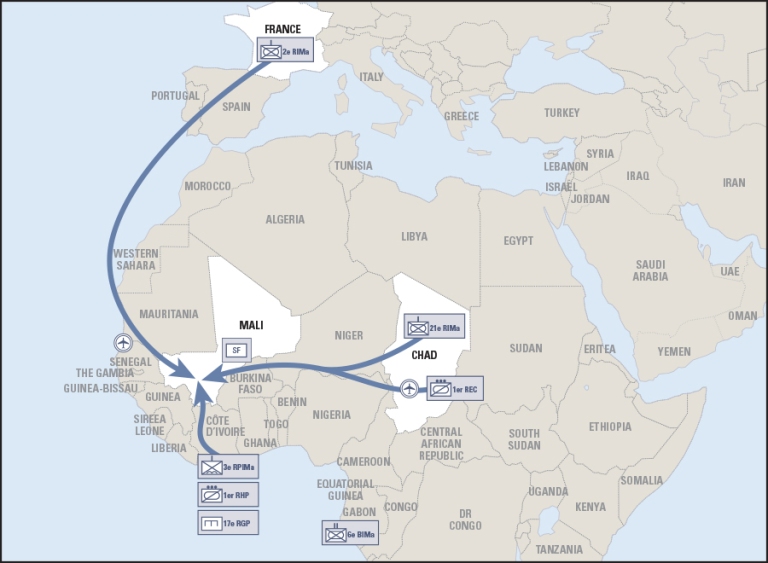
However, this did not mean French officers and engineers stopped thinking about news forms of ground warfare. For ten years, DGA, the defense procurement agency, and the Army studied new force concepts and how to exploit the advances in technology. The first result of those studies was the Félin programme, which equipped the infantry with a new information network and advanced observation capabilities through thermal rifle sights and binoculars.

New Vehicles
Although Félin initially suffered from weight and usability issues, it paved the way for a second and much more ambitious wave of developments, the SCORPION program. SCORPION procurement was officially launched in 2014 with a 8 billion € contract for two new vehicles, to replace the 40 years-old VAB wheeled Armored Personnel Carriers and the medium and light cavalry vehicles. Their replacement were the Griffon (Griffin) APC, and the Jaguar recon and combat vehicle.

One of the interesting features of these vehicles is their integrated electronics architecture (which the French call vetronics for vehicle electronics) and the amount of sensor they carry. The Jaguar in particular is filled to the brim with them, while at the same time sporting a medium caliber cannon and anti-tank missiles:
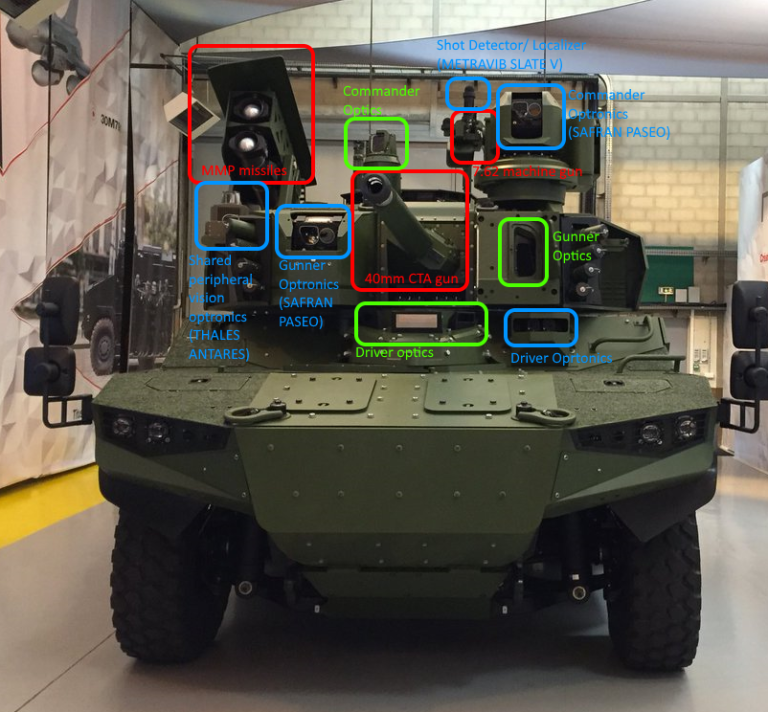

For the SCORPION vehicles, the French industry developed a panoramic viewing system called ANTARES, to give a 360° situational awareness to all members of the crew at the same time: all users see the whole 360° view and can zoom in on regions they select. This allows for a much better understanding of the environment, especially in urban combat.
ANTARES was developed by Thales, which also manufactures the device linking all SCORPION systems together, the CONTACT digital radio. SAGEM, the other large French optronics manufacturer, developed a ground version of its naval PASEO gun sight, as well as inertial positioning systems to avoid being reliant on GPS. A smaller firm, Metravib, produces the SLATE V system, which detects and localizes gunfire based on the sound of the shot and the supersonic shockwave of the projectile.
On the weapon side, the European missile manufacturer MBDA provides the new MMP medium-range (5km) anti-tank missile, and the BAe-NeXter joint venture CTA sold the 40mm gun. The remote weapon stations are from Arquus (formerly Renault Trucks Defense).
Regarding the vehicle on the whole, it is designed by NeXter. It has a crew of 3: a driver, a gunner and a commander, and is destined to perform armed reconnaissance and anti-armour combat in the cavalry. It follows a long heritage of wheeled cavalry vehicles, replacing for instance the AMX-10 wheeled light tank. More details on the Jaguar can be found here.

The Griffon APC is a more conventional 6×6 vehicle, but shares some of the same sensors and electronics. On both vehicles, the architecture is fully integrated, allowing for instance to point weapons at enemy shots detected by the SLATE V system.
A lighter 4×4 APC called Serval will fill the role of the Griffon for the air-mobile brigade, and also serve as the basis for specialized vehicles such as mortar carriers or artillery observation vehicles. The program also will also bring upgrades to the Leclerc Main Battle Tank, and eventually introduce a high mobility recon 4×4 called VBAE. So all components of the Army will be modernized, with the only gap perhaps being a highly mobile short-range air defense system to provide cover to the Jaguar and Leclerc.

However, SCORPION is not just a few innovative vehicles. It is first and foremost a global force concept addressing the whole Army, from infantry to helicopters. The main aim is to propel France into the era of what the Army calls “collaborative combat”. This means all units will belong to a single network, and information will be collected in real-time from every sensor of the force, fused, and then each user will be displayed the part that is relevant for them.
Collaborative Combat
A first step of collaborative combat is to have blue force tracking of all friendly units, and to be able to exchange orders and situations reports quickly.
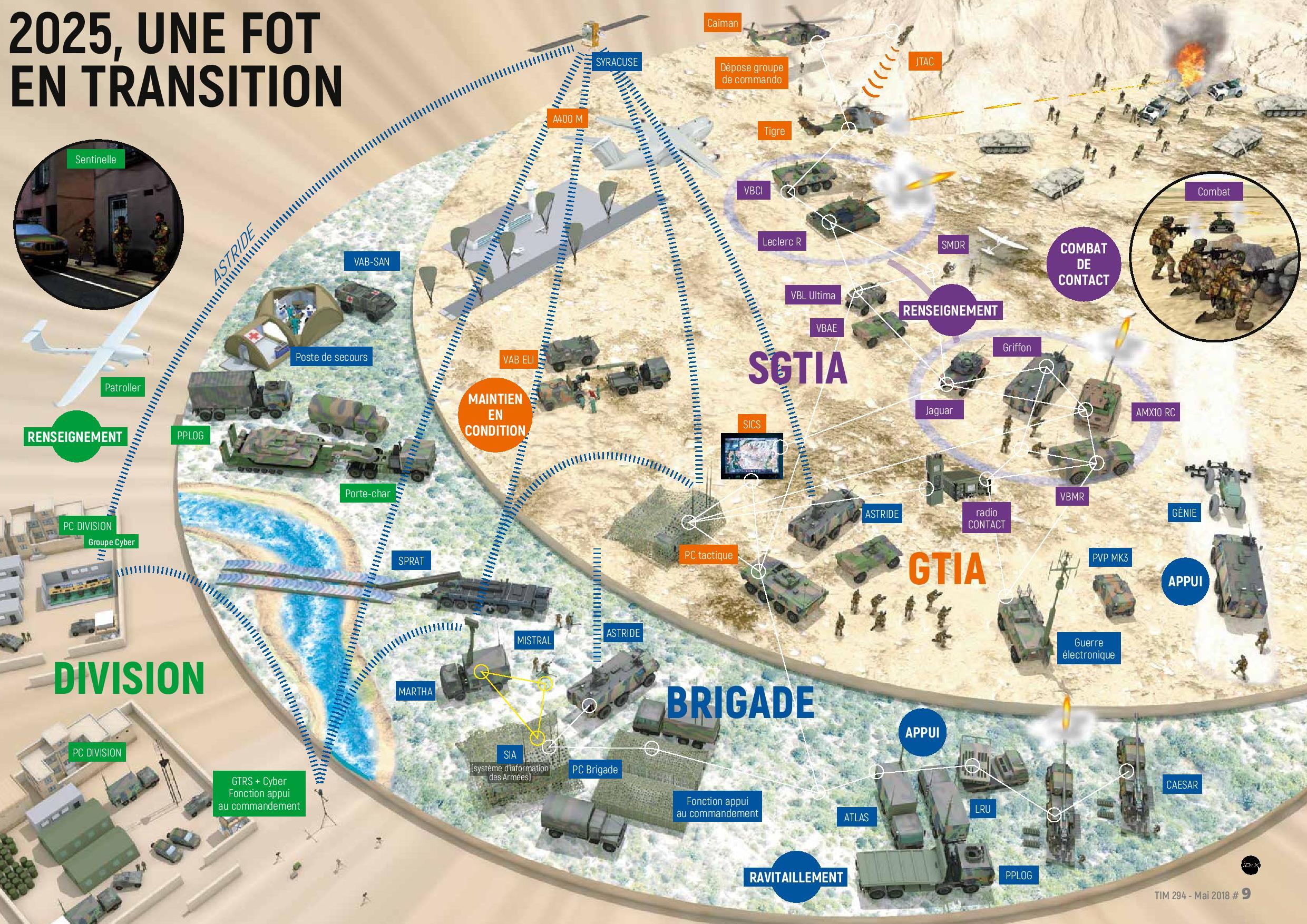
Ultimately, the aim of collaborative combat is to accelerate the operational tempo, by reducing the time between the detection of a threat and its destruction. The Army eventually wants to be able to do it in “reflex time”, meaning the whole system will react almost instantly. For instance, take the scenario below:
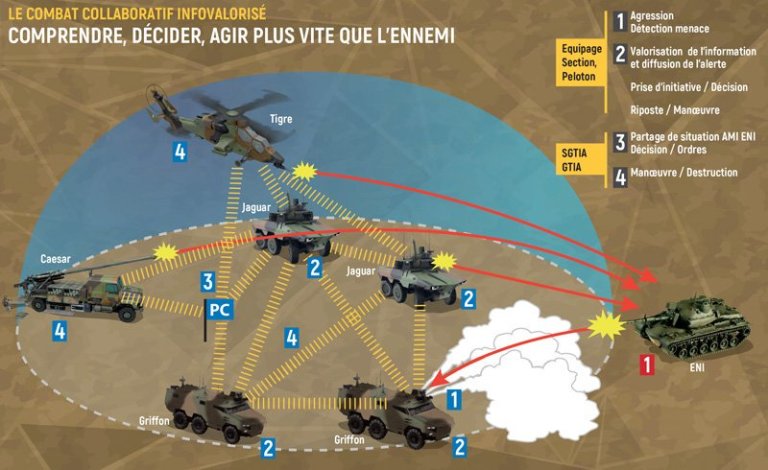
The sound sensor on a Griffon detects it has been engaged by an enemy tank (1). It deploys its smoke screen in the direction of the threat (2). At the same time, the detection is shared to all of the other platforms, and can be refined if others have detected the gunshot. Platforms that are close to the enemy receive a threat alert (2). The good situational picture allow for better and quicker decision, and orders flow down faster (3). The destruction of the threat can even happen in “reflex time” (4): an algorithm identifies the asset that is best positioned to engage the enemy, and thanks to the integrated vetronics, the weapons and sensors of this vehicle are automatically pointed at the target. The human stays in the loop for the final firing decision.
Thus, the whole SCORPION force acts as a system of systems, as if it were a single organism with each vehicle being its eyes and limbs. It goes a step beyond what is currently done in Mali, in that all assets belong to the same real-time network, all the information is digitized and the decision making is much faster.
Another benefit of SCORPION is embedded simulation: since everything is digitized and networked, it is possible to simulate large-scale engagements using the vehicles themselves, without purchasing dedicated simulators.
What does it look like in the field?
Based on the publicly available information from the ministry of Defense and manufacturers’ websites, I created a map view of what an armored SCORPION force might look like on the battlefield. It shows the range of the various sensors and weapons, to scale. It is intended to help visualize how the different elements can deploy and cover each other.

A higher-resolution image is available there, and pdf version is also available.
Conclusion
With the SCORPION program, France is recapitalizing its ground forces and succeeding where other attempts at future combat programs failed: the end goal has been clearly defined, technical risks have been thoroughly retired, procurements costs are under control, and the system will by deployed by the middle of the next decade. The improved combat capabilities will be welcomed in a world where armored warfare has come back to Europe through Russia’s war with Ukraine. Together with the “Au contact” reorganization of the Army, it will ensure French forces have an edge over their future adversaries.
Special thanks to Florent de Saint Victor (@Marsattaqueblog), author of the Mars Attaque defense blog, for providing information on SCORPION gathered at EuroSatory 2018!
Further Reading
The French Defense procurement engineer’s magazine on SCORPION (Terrestre, la mutation. Magazine des ingénieurs de l’armement. n°109, Juin 2016. in French)
French infantry magazine issue on SCORPION (Fantassins n°41, 2018. In French)
French artillery magazine article on short-range air defense (Artimag n°23, 2018. pp34-40. In French)
French cavalry magazine article on the genesis of the EBRC (Cavalerie, Juin 2013, pp 11-14. In French)
SCORPION on the French Ministry of Defense website (in French)
A SCORPION overview by the Challenges magazine (paid access, in French)
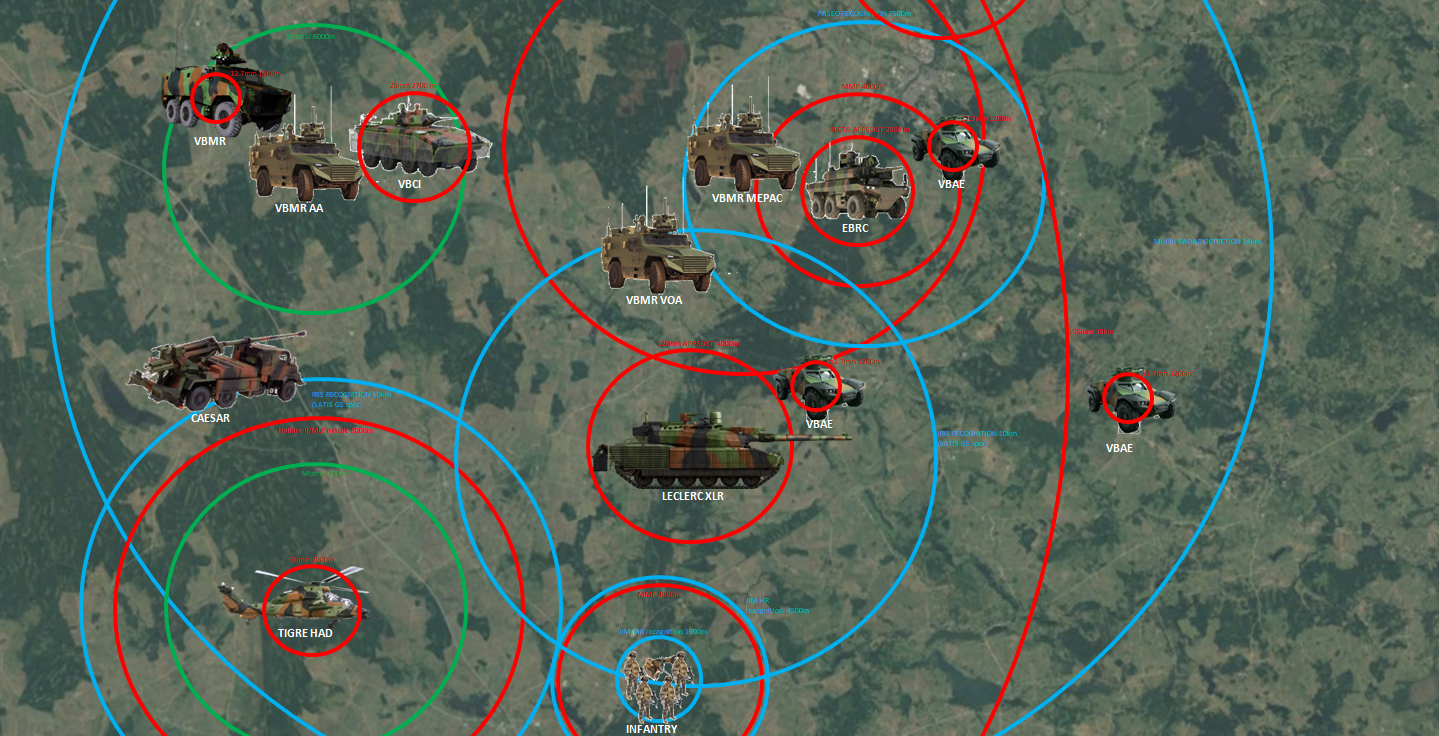
9 thoughts on “France’s reforged, digitized ground forces”